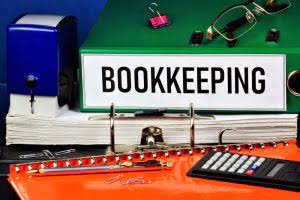
Hopefully, it’s given you a better understanding of what CPG is, what products fall into this area, and why CPG is essential to brands and consumers alike. So, while CPGs were traditionally sold in physical stores, those same stores are now in competition with online sellers such as those we mentioned earlier. For example, food items with a shorter life span, like milk or fish, must be used fast. In contrast, others, like household cleaning or personal hygiene products, last longer.
- In 2019, the company brought in annual revenues of USD 31.85 billion — making it one of the top CPG firms in the world by revenue.
- But restoring — or exceeding — job levels seen prior to COVID-19 poses significant challenges as the labor market tightens.
- The consumer packaged goods (CPG) industry is poised for significant transformation in 2025, driven by evolving consumer demands and rapid technological advancements.
- FMCG is a subset of consumer packaged goods, as it includes products that are consumed on a daily basis and need to be purchased frequently.
Choose interlocking capabilities that play to your strengths

These goods are typically sold in retail stores, supermarkets, and online marketplaces. The way consumers shop for CPG products has significantly evolved Accounting for Churches due to advancements in technology and changing consumer preferences, leading to a shift towards ecommerce and the rise of direct-to-consumer brands. Consumer Packaged Goods (CPG) are products that consumers use daily and replace frequently, such as food, beverages, toiletries, and cleaning products. The CPG industry is a massive sector within the global economy, featuring some of the world’s largest and most influential companies. These companies are continuously innovating to meet changing consumer preferences, improve sustainability, and leverage new technologies.
Agenda 1: Portfolio
Volume grew primarily because of elevated consumer demand during the pandemic, with the biggest spikes coming in March 2020, when shoppers rushed to the physical and digital aisles and prepared to face lockdowns. Growth in 2020 was driven meaningfully by volume, which not only shot up by 6.4% industrywide but also overtook price/mix cpg accounting for the first time in more than ten years. (Price/mix is a metric that’s calculated using like-for-like pricing and product mix to determine a change in the absolute price.) Price/mix reached a decade-high annual gain of 3.7%. This organism consists of a network of teams, all advancing in a single direction, but each given the autonomy to meet their particular goals in the ways that they consider best. In this model, the role of leadership changes from order-giver to enabler (“servant leader”), helping the teams achieve their goals. In addition to taking functional excellence to the next level, FMCGs will need to focus relentlessly on innovation to meet the demands of their core mass and upper-mass markets.

Consumer Packaged Goods (CPG) Market Trends
Their marketing strategies involve attracting the target market by having a celebrity pull factor and the same has been working wonders for the brand. The term CPG stands for Consumer Packaged Goods and it can be defined as the products that are sold very quickly in the marketplace and at very reasonably low prices. The examples of CPG include the products and goods that are non-durable in nature such as beverages, packaged food items, toiletries, medical drugs that are sold over the counter, and other such consumable products. Boston Consulting Group partners with leaders in business and society to tackle their most important challenges and capture their greatest opportunities. Today, we work closely with clients to embrace a transformational approach aimed at benefiting bookkeeping all stakeholders—empowering organizations to grow, build sustainable competitive advantage, and drive positive societal impact.

Top 10 Consumer Packaged Goods Companies in the World by Sales
- It is introducing healthier options in its cereal category with less sugar and more grains, and exploring plant-based products such as MorningStar Farms breakfast sausages to meet the demands of the consumers.
- It certainly doesn’t help that retailers have been looking to share their own margin pain with CPGs.
- Traditionally, customers purchase CPGs from brick-and-mortar retailers, like supermarkets and drug stores.
- DTC brands have become more popular among tech-savvy generations like Gen Z and millennials.
It directs its efforts towards becoming a competitive, global company that leads in health, wellness, and nutrition. Consumer-packaged goods are low-cost consumer goods that people use on a daily basis, which means they must replace their supply on a regular basis. Because these products rapidly move off store shelves, they’re also referred to as fast-moving consumer goods. Cash flow represents the movement of money both into and out of a business over a period of time. Positive cash flow indicates that a company has more money coming in than going out, which is essential for meeting short-term obligations, investing in growth, and ensuring financial stability.

- Advertising, in particular, plays a significant role in enhancing brand recognition.
- As consumers search out private-label products and pay more attention to sustainability measures, CPG companies will need to be quick to adapt.
- Beyond Meat is a CPG company that produces plant-based meat alternatives for its consumers.
- Centralized distribution centers equipped with automated pick and pack systems help brands scale.
- In our previous report, where we asked consumer products executives what the biggest external challenges had been in 2023, the high cost of raw materials headed the list, having been cited by more than 80% of respondents.
Within the CPG ecosystem, retail customers and CPG consumers represent two distinct groups. Retail customers are the end-users who engage in product purchases with a focus on experiences. On the other hand, CPG consumers, including manufacturers, sellers, and marketers, exert significant influence on the industry through their product requirements and consumption trends. From Dove for personal care to Coca Cola and Pepsi for beverage needs, these brands are a part of our routines. They are not just products that we consume; they are brands that we trust and rely on for our well-being. Nestle, PepsiCo, and Procter & Gamble are market leaders in the CPG industry, closely related to retail companies.